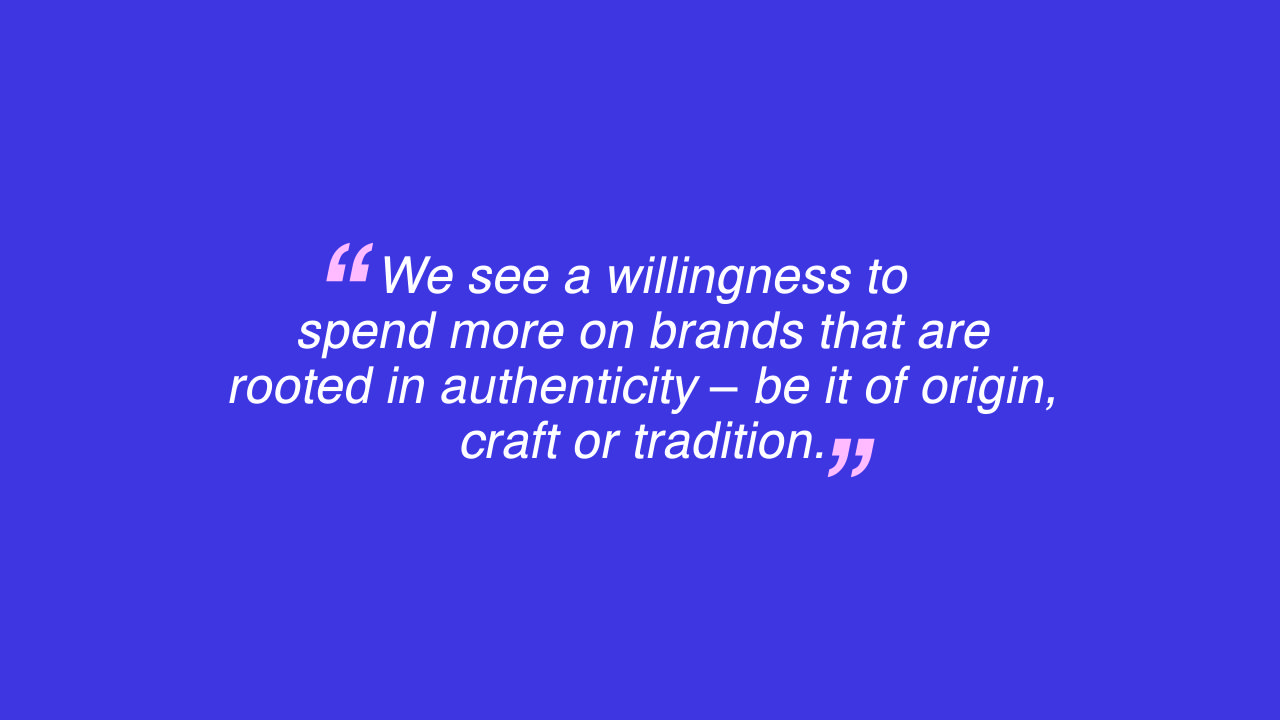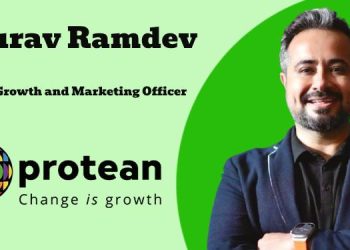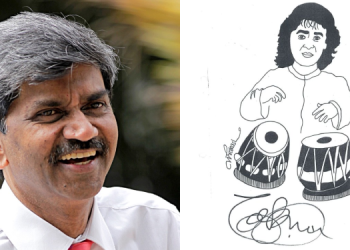The story is of India recovering after the pandemic – a reset for the people across India that the two-pronged recovery is showing us. With intriguing insights and some aspects that highlight the need for balance and sensitivity, the big picture unravels as the recoveries are moving in somewhat differing directions. Marketers and brand custodians would do well to pay heed to stay on the pulse of the Indian consumers.
Arriving at the Insights
To begin with, a run-through of how these trends and insights were arrived at. Ipsos Global Trends 2023 is a global exercise across 50 countries – a coverage of 87 pc of the global economy, and 70 pc of the global population. Across the world we are seeing as much continuity as we see change. In India, a hybrid data collection was done. An online sample of 1,000 and an offline sample of 2,000 made it a robust and representative capture. Ipsos Global Trends works on the conceptual and proprietary framework of Ipsos’ Theory of Change.
The 12 trends that emerged from analysis by trends and foresight experts are being tracked globally across the world since 2019. The 2023 Insights help us understand how consumers are responding to the post-pandemic recovery now.
The bigger trends remain in the healthcare domain, but that is where the similarities end. As per World Inequality Report 2022, the top 1 pc of the Indian population holds 15 times more wealth than the bottom 50 pc. The trends suggest that Indians are divided in working towards their common goal to normalise post-crisis. The Urban Masses and Digital Indians are responding quite differently to the macro picture emerging in India. In Part 1 we will cover the key theme which sheds light on the chasm between these two cohorts we are observing.
The Two Indias
Milind Sarthak, an electrical engineer, gave up his job to set up a small electronic sales and repair business in Mumbai in 2019. Even before his business broke even, Covid-19 struck, and his business and income ended abruptly. He resumed his business which is now picking up. He is keen to make up for lost time. He works longer hours than before and has made some smart business investments by picking up loans in the hope of better returns. He is optimistic about his opportunities for growth in post-pandemic India. He is keen to be able to afford his family a better lifestyle after the severe curbs on family spending in the past three and a half years. He looks out for good bargains whether it is taking his family out on a holiday nearby or whether it is buying clothes and accessories for his daughter on e-comm websites such as Meesho.
Vaishnavi Vaidyanathan works as a tech lead in one of the leading IT firms in Bengaluru. Her main client is based in Germany. During the pandemic, all her work moved online. In fact, her entire routine moved online – whether it was work, her social life, her entertainment, shopping and even news. She became hooked on social media and participated in furious debates on platforms such as Facebook, Twitter, and Reddit. She admits that this digital overdose has left her completely frazzled. She is looking to change by detoxing and looking for simpler ways to bide her time. She seeks more authentic interactions and comfort. She has recently invested in an expensive vinyl player and records which she bought very proudly from a store rather than shopping online. She cherished attending the LollaPalooza music festival earlier this year in Mumbai – the live music, the crowds, and the celebrations were all a very heady experience for her.
These two stories illustrate the biggest change we are seeing in India post the pandemic. Milind is representative of the ‘Urban Masses’ and Vaishnavi, of the ‘Digital Indians’.
The more affluent and digitally savvy consumers are looking at slowing down
 Digital Indians are showing strong signs of saturation and being overwhelmed with all things digital. Despite being early adopters and first movers (and may have even relished that badge), they now tend to blame technology for a lot of things going wrong today – from technological progress destroying our lives to social media companies having the power enough to control the lives of individuals without their knowledge. Younger Digital Indians are concerned about the loss of data privacy, especially in light of growing online money scams. The signals are clear – offline, slower lives and to keep things real. Authenticity is becoming increasingly important to them whether it is in products or in experiences. We see a willingness to spend more on brands that are rooted in authenticity – be it of origin, craft or tradition. Nostalgia for simpler times is critical to remain anchored to simpler, more authentic times. One such manifestation is the return to real, authentic, brick-and mortar experiences which afford more touch and feel, more real shopping experiences rather than virtual ones. By comparison, online shopping among older Digital Indians, is fraught with more difficulties with frauds, fake reviews, having too many choices and no real way of determining authenticity. Younger members of this cohort are more accepting of online shopping, but they seem to stride offline shopping channels with consummate ease.
Digital Indians are showing strong signs of saturation and being overwhelmed with all things digital. Despite being early adopters and first movers (and may have even relished that badge), they now tend to blame technology for a lot of things going wrong today – from technological progress destroying our lives to social media companies having the power enough to control the lives of individuals without their knowledge. Younger Digital Indians are concerned about the loss of data privacy, especially in light of growing online money scams. The signals are clear – offline, slower lives and to keep things real. Authenticity is becoming increasingly important to them whether it is in products or in experiences. We see a willingness to spend more on brands that are rooted in authenticity – be it of origin, craft or tradition. Nostalgia for simpler times is critical to remain anchored to simpler, more authentic times. One such manifestation is the return to real, authentic, brick-and mortar experiences which afford more touch and feel, more real shopping experiences rather than virtual ones. By comparison, online shopping among older Digital Indians, is fraught with more difficulties with frauds, fake reviews, having too many choices and no real way of determining authenticity. Younger members of this cohort are more accepting of online shopping, but they seem to stride offline shopping channels with consummate ease.
The urban masses want to make up for lost time
 Urban Masses are more worried about wealth disparity. They are acutely aware that they are on the wrong side of the track on this one and do not want to be left behind in a rapidly changing world. The entire energy then is on progress and career advancement, playing catch up and generally ensuring upward mobility for themselves and their families. The digital medium is helping them in achieving their aspirations. In fact, they began more sustained interactions with the digital world during the pandemic, whether this was for children’s education, vaccination certificates or for shopping. These are clearly in favour of globalisation, a counter to the trend emerging in the western world, and also in favour of capitalism – looking up to and trusting business leaders to help them close the wealth divide. Online shopping offers them a more upgraded experience than the typical neighbourhood store – more range, more affordable prices, more discounts, convenient returns – all of this in just one click. All of this was brought to life in a big way when they were shopping for mobile phones for their children’s schooling during the pandemic – the sheer choice and discounts made them realise how online shopping had much more to offer, much beyond offline stores in their towns and cities.
Urban Masses are more worried about wealth disparity. They are acutely aware that they are on the wrong side of the track on this one and do not want to be left behind in a rapidly changing world. The entire energy then is on progress and career advancement, playing catch up and generally ensuring upward mobility for themselves and their families. The digital medium is helping them in achieving their aspirations. In fact, they began more sustained interactions with the digital world during the pandemic, whether this was for children’s education, vaccination certificates or for shopping. These are clearly in favour of globalisation, a counter to the trend emerging in the western world, and also in favour of capitalism – looking up to and trusting business leaders to help them close the wealth divide. Online shopping offers them a more upgraded experience than the typical neighbourhood store – more range, more affordable prices, more discounts, convenient returns – all of this in just one click. All of this was brought to life in a big way when they were shopping for mobile phones for their children’s schooling during the pandemic – the sheer choice and discounts made them realise how online shopping had much more to offer, much beyond offline stores in their towns and cities.
Marketers can focus on emerging opportunities
These findings hold a treasure trove of learnings for marketers. If your brand targets the more affluent, remember, some brands are already cashing in on the nostalgia trend but there is room for many more offerings here – whether it is analogue electronics, trace-your-roots holidays and experiences, hospitality focused on genuine experiences such as digital detox and so on. There is opportunity for niche premiumisation through authentic stories around process, ingredients, and origins. Create experience zones within modern trade stores for consumers to have more unique real experiences. Simplicity in sensorials is likely to be much appreciated by this segment.
Communicating value is going to be paramount for Urban Masses. The value e-commerce segment has exploded in recent times with the addition of new players such as Meesho and Shopsy. There is more opportunity for other players in this segment. Value bundling can be another way of attracting the Urban Masses. Given the bromance with technology, there is always room for more feature-laden gadgets in affordable price ranges. From a communication point of view, remember that this cohort is more struck now by business and other leaders, they are not only film and sports personalities-driven. There is more value than for self-made people such as some of the more authentic social media influencers.
(The authors are from Ipsos India. Sakina Pittalwala is Executive Director, UU; Krishnendu Dutta is Group Service Line Leader – Innovation, MSU & Strategy (3); Pallavi Mathur Lal is Knowledge Lead.)
Feedback: [email protected]

















